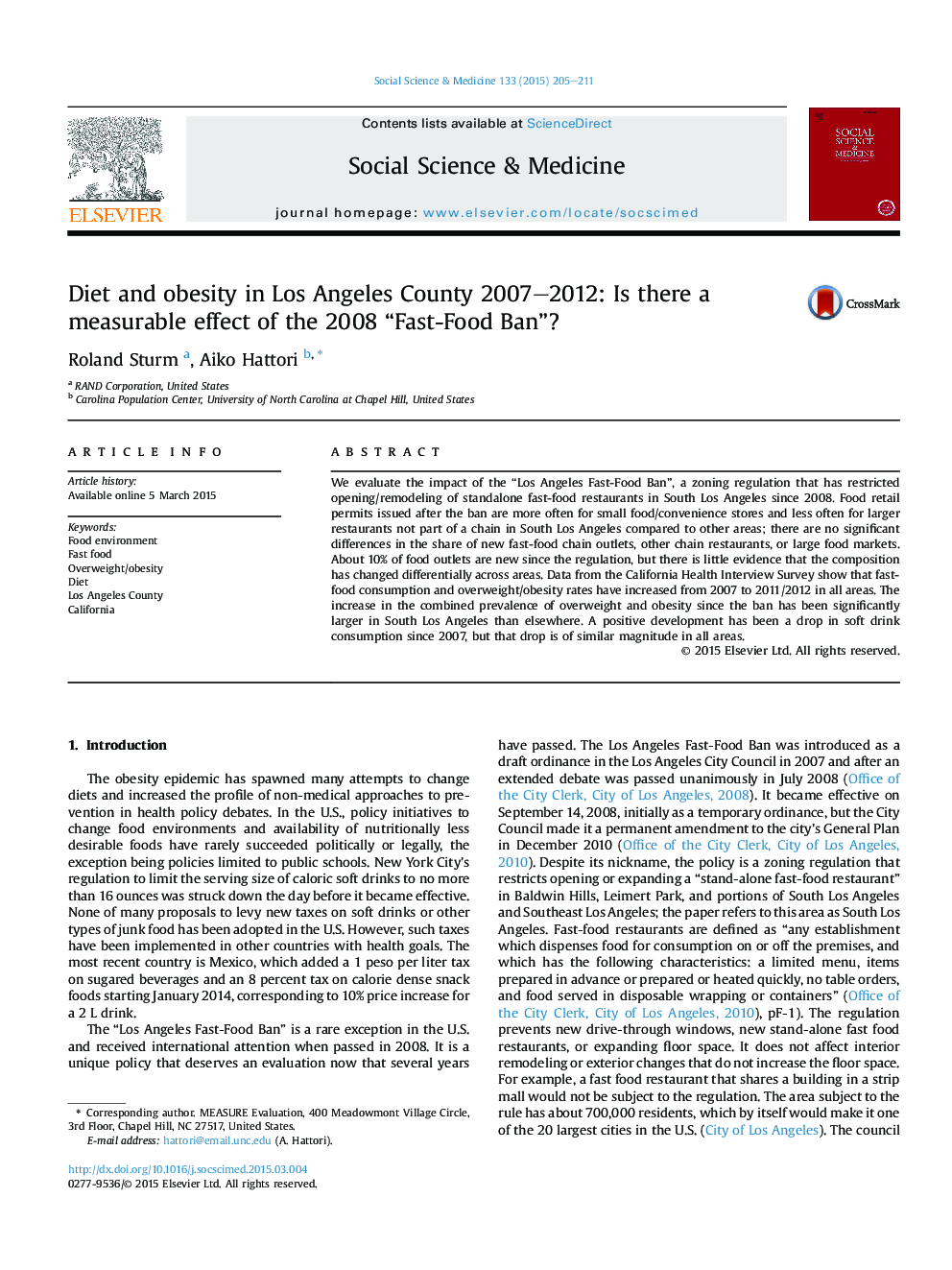| Article ID | Journal | Published Year | Pages | File Type |
|---|---|---|---|---|
| 7332848 | Social Science & Medicine | 2015 | 7 Pages |
Abstract
We evaluate the impact of the “Los Angeles Fast-Food Ban”, a zoning regulation that has restricted opening/remodeling of standalone fast-food restaurants in South Los Angeles since 2008. Food retail permits issued after the ban are more often for small food/convenience stores and less often for larger restaurants not part of a chain in South Los Angeles compared to other areas; there are no significant differences in the share of new fast-food chain outlets, other chain restaurants, or large food markets. About 10% of food outlets are new since the regulation, but there is little evidence that the composition has changed differentially across areas. Data from the California Health Interview Survey show that fast-food consumption and overweight/obesity rates have increased from 2007 to 2011/2012 in all areas. The increase in the combined prevalence of overweight and obesity since the ban has been significantly larger in South Los Angeles than elsewhere. A positive development has been a drop in soft drink consumption since 2007, but that drop is of similar magnitude in all areas.
Related Topics
Health Sciences
Medicine and Dentistry
Public Health and Health Policy
Authors
Roland Sturm, Aiko Hattori,
